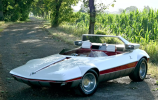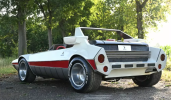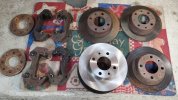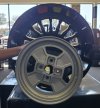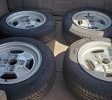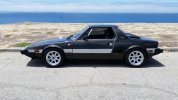Sure feels good to have her back on her tires and out on the road again, after ~7 weeks on jackstands.
Re-doing the wheels took a long time due to cold weather preventing painting, and a lot of other jobs took 2 or 3 times longer than expected (like going through 3 V belts until I got the right size, or taking out instrument cluster ~5 times to tweak the new speedo and tach needle orientation).
Really happy how she looks with the new seat covers and sans vinyl graphics, and REALLY happy with how she drives with the new, skinnier tires, tightened up shift linkage, no clicking speedo, smooth new brakes, new filters and fresh oil.
Forza Fiat!
View attachment 71508
View attachment 71507View attachment 71510View attachment 71511View attachment 71506
. The basic lines are best left alone. Yours will look pretty darn good in simple red with those very nicely done wheels.

